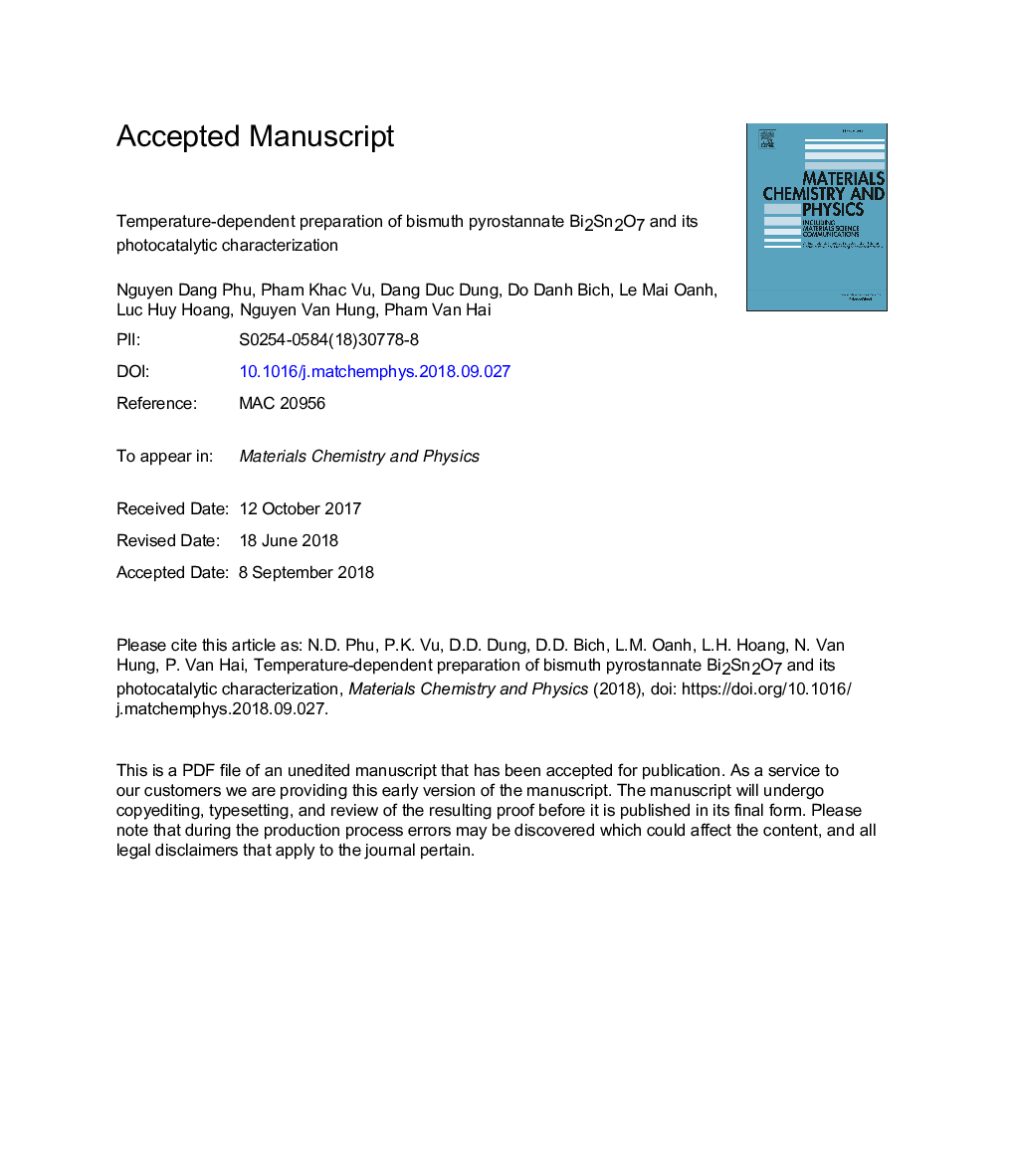| Article ID | Journal | Published Year | Pages | File Type |
|---|---|---|---|---|
| 10155621 | Materials Chemistry and Physics | 2019 | 18 Pages |
Abstract
Bi2Sn2O7 nanoparticles were successfully synthesized via a fast microwave-assisted method and high temperature treatment. The obtained nanoparticles were characterized using X-ray diffraction (XRD), thermogravimetric analysis (TGA), differential scanning calorimetry (DSC), scanning electron microscopy (SEM), UV-Vis diffuse reectance spectroscopy (DRS), photoluminescence spectroscopy (PL), total organic carbon (TOC) measurement and Raman spectroscopy. We found that there is an optimal thermal treatment temperature for Bi2Sn2O7 for the highest photocatalytic activity in the decomposition of rhodamine B (RhB) under visible light irradiation. We observed an improvement in activity when the thermal treatment temperature increases from room temperature to 500âC, but the activity decreases when the sintering temperature is increased further. The reason behind the enhanced photocatalytic efficiency is a better separation of the charge carriers which is competitive with the specific surface area, crystallinity and crystal size.
Related Topics
Physical Sciences and Engineering
Materials Science
Electronic, Optical and Magnetic Materials
Authors
Nguyen Dang Phu, Pham Khac Vu, Dang Duc Dung, Do Danh Bich, Le Mai Oanh, Luc Huy Hoang, Nguyen Van Hung, Pham Van Hai,
